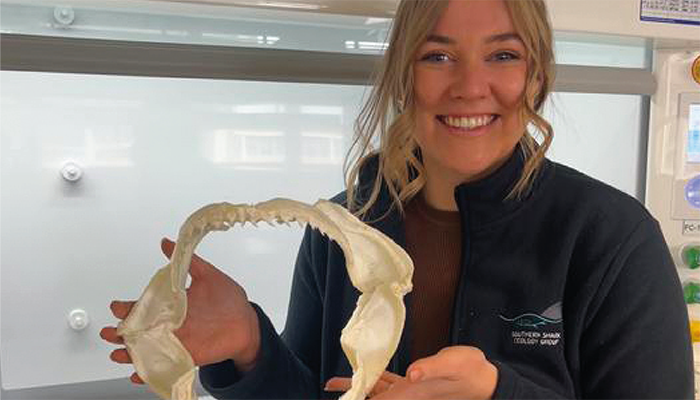
Credit: Flinders University
Researchers use structures for lossless ion manipulations (SLIM)-based high-resolution ion mobility (HRIM) coupled with chromatography and tandem mass spectrometry to distinguish and identify branched PFAS isomers and their unique fragmentation patterns. Link
Orbitrap-based charge detection mass spectrometry (CDMS) and mass photometry (MP) used to precisely measure the intact masses of large, heterogeneous mRNA therapeutics up to ~3 MDa. Link
Untargeted serum metabolomics via ultra performance liquid chromatography tandem mass spectrometry (UPLC-MS/MS) reveals new biomarkers in children with Williams-Beuren syndrome – a rare congenital disorder. Link
Using high-resolution liquid chromatography mass spectrometry (LC-MS), Wei-Wei Deng and colleagues characterize the aroma, taste and metabolites of four albino green teas. Link
Identification of distinct lipid and protein alterations in PET-defined subtypes of temporal lobe epilepsy, via matrix assisted laser desorption/ionization mass spectrometry imaging (MALDI-MSI) and liquid chromatography tandem mass spectrometry (LC–MS/MS) proteomics. Link
How Elephant Teeth Reveal Migration Patterns
As mentioned last week, strontium isotopes in tooth enamel have provided a new way to trace the movement of large herbivores across landscapes, thanks to a study led by University of Utah geologists. Using laser ablation inductively coupled plasma mass spectrometry (LA-ICP-MS), researchers analyzed the teeth and tusks of a zoo elephant named Misha, refining a technique that could be applied to both modern conservation efforts and the study of extinct species such as mammoths and mastodons.
"Our study not only adds to our understanding of how tooth enamel records an animal's Sr isotope exposure but also helps to reconstruct animal migrations," said lead author Deming Yang in a press release… Read more!
Tooth or Dare
And now, for the second week in a row, a dentally-inspired mass spec discovery!
I can’t say I’d previously considered the value of shark teeth before, besides their use in pendants for surfers. That was until I came across a study from Flinders University researchers who teamed up with the University of Tasmania to analyze teeth from cownose rays, gummy sharks, and broadnose sevengill sharks.
Using isotope ratio mass spectrometry (IRMS), the team measured carbon, nitrogen, and sulfur isotopes in teeth from jaws preserved with bleach, ethanol, and hydrogen peroxide. They found that neither bleach nor ethanol altered isotope values, implying jaws collected decades ago can be used to help reconstruct historical diets and understand long-term changes in marine ecosystems.
Lauren Meyer, lead author of the study, noted that the discovery “opens the door to use a tremendous resource of samples to untangle the current and historic diet and foraging habitats of complex predators – making the most exciting finding from this study the capacity for new research that is now possible,” in a recent press release.




